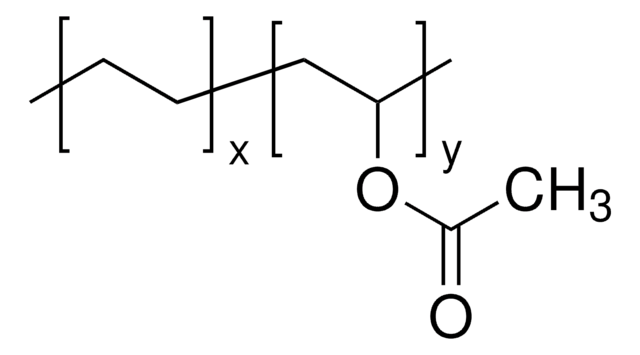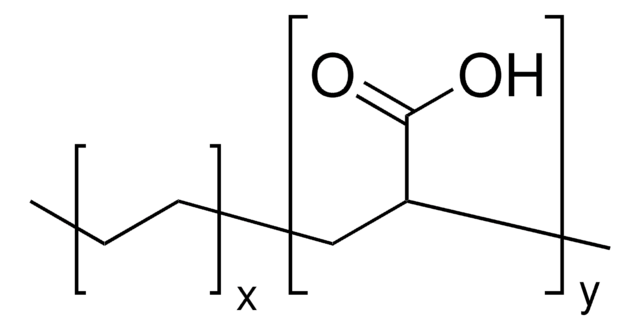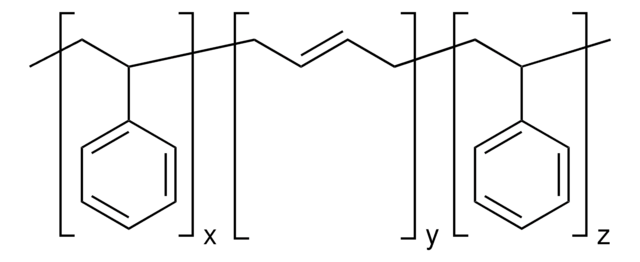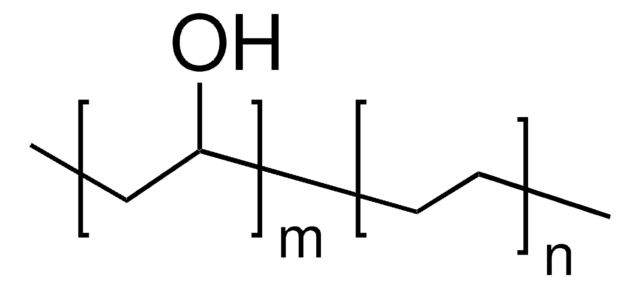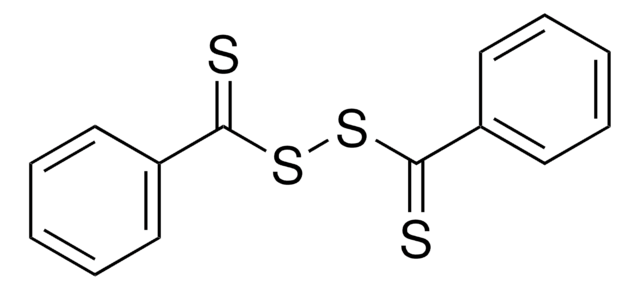437239
Poly(ethylene-co-vinyl acetate)
vinyl acetate 18 wt. %, melt index 8 g/10 min (190°C/2.16kg), contains 200-900 ppm BHT as inhibitor
About This Item
Recommended Products
form
beads
autoignition temp.
500 °F
melt index
8 g/10 min (190°C/2.16kg)
contains
200-900 ppm BHT as inhibitor
composition
vinyl acetate, 18 wt. %
hardness
38 (Shore D, ASTM D 2240)
mp
87 °C
transition temp
softening point 61 °C (Vicat, ASTM D 1525)
density
0.94 g/mL at 25 °C
SMILES string
C=C.CC(=O)OC=C
InChI
1S/C4H6O2.C2H4/c1-2-3-4(5)6;1-2/h2H,1,3H2,(H,5,6);1-2H2
InChI key
DQXBYHZEEUGOBF-UHFFFAOYSA-N
Looking for similar products? Visit Product Comparison Guide
Application
Features and Benefits
Signal Word
Warning
Hazard Statements
Precautionary Statements
Hazard Classifications
Carc. 2
Storage Class Code
11 - Combustible Solids
WGK
WGK 2
Flash Point(F)
Not applicable
Flash Point(C)
Not applicable
Certificates of Analysis (COA)
Search for Certificates of Analysis (COA) by entering the products Lot/Batch Number. Lot and Batch Numbers can be found on a product’s label following the words ‘Lot’ or ‘Batch’.
Already Own This Product?
Find documentation for the products that you have recently purchased in the Document Library.
Our team of scientists has experience in all areas of research including Life Science, Material Science, Chemical Synthesis, Chromatography, Analytical and many others.
Contact Technical Service